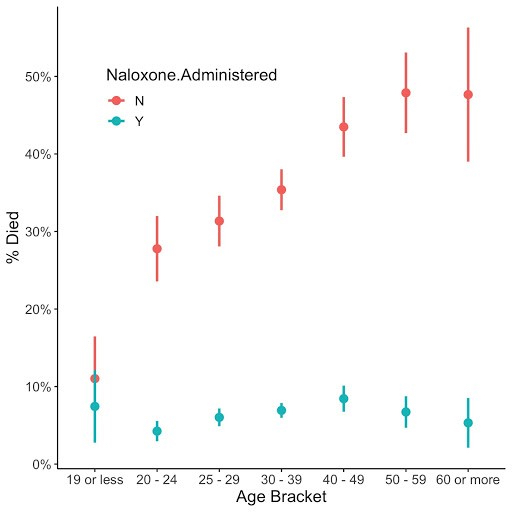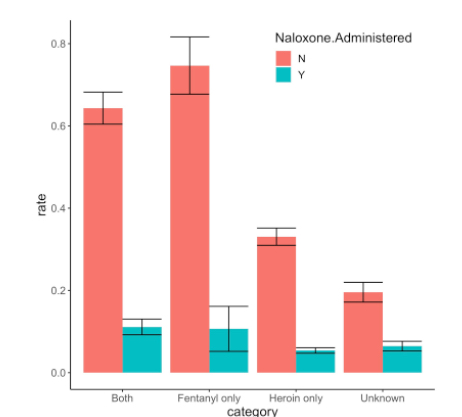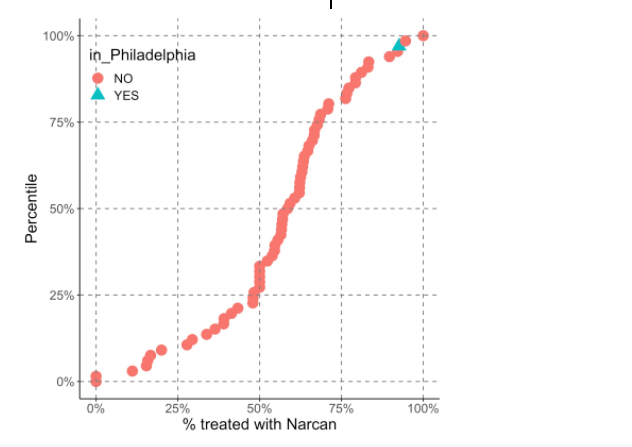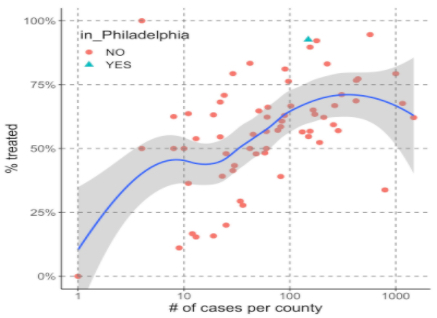It was a crisp autumn evening in 2018, and Sara was having an ordinary day. After work, she ducked into her South Philadelphia neighborhood pharmacy to pick up some household provisions. Balancing a bottle of Tylenol, her cell phone, and reflections on her day’s work as a technology consultant, she joined the ritual of waiting in line.
Until the customer in front of her collapsed.
Fortunately, they were in a pharmacy. A centuries-old institution relied upon by members of the community seeking help for their ailments — surely someone would know what to do. This hopeful thought was quickly dashed. Also perplexed, the pharmacy staff swiftly dialed 911 and everyone waited for what seemed like an eternity for the ambulance to arrive.
As the customer’s breathing grew more shallow and their skin turned blue, Sara ransacked the corners of her mind for a way to help. In a crisis like this one, every moment counts. In the job she’d just left for the day she was a technologist. She solved problems. Helplessness was not familiar or welcome.
Sara shared this story with me when I was reeling from the unexpected loss of a colleague due to a fentanyl overdose. A beautiful family, high-paying meaningful job, and supportive friends stood in contrast to her affliction; as far as any of us close to her knew, she had never so much as looked at an opioid in her life.
However, opioid use disorder can affect anyone, and overdoses can occur at any time. One of the most sinister elements of the current opioid crisis is the addition of fentanyl. In August of 2020, the DEA issued a public warning about fentanyl-related overdose deaths. Fentanyl, a highly concentrated narcotic, is sometimes laced into other drugs, often causing those who take them to ingest a profoundly higher dose than intended. The Health Federation of Philadelphia reports that further, because of fentanyl’s illegality and potency, doses can vary. This means that someone who is used to taking a certain amount can overdose on the same amount if the next batch is much more potent.
The 2020 Opioid Hackathon was created by Code for Philly in partnership with the Health Federation of Philadelphia and Prevention Point. I reached out to some of my coworkers at Children’s Hospital of Philadelphia, fellow Drexel University students, and former coworkers to see if they wanted to form a team. I was overwhelmed by the outpouring of responses from incredibly brilliant people with a diverse skill set and outlook. We wanted to examine how naloxone can save lives, who is most vulnerable, and show when overdoses occur to both inform services and remove stigma.
Hoping to better understand the opioid epidemic in Pennsylvania, we analyzed data sets including overdose events logged by the Pennsylvania State Police and naloxone distribution data collected by Prevention Point. Here are some of the questions we can answer, and how they can be used to help the community:
When do opioid overdoses occur?
Across Pennsylvania, people are primarily overdosing during evenings and nights leading up to and including the weekend, suggesting that many people suffering with opioid use disorder hold down typical 9-5 job responsibilities.

Even though overdoses start to spike in advance of the weekend, Narcan administration and survival rates are fairly steady through the week. This suggests that distribution of the life-saving drug is not keeping up with the weekend spike.
What is naloxone?
According to drugabuse.gov, a site maintained by the National Institute on Drug Abuse:
Naloxone is a medication designed to rapidly reverse opioid overdose. It is an opioid antagonist — meaning that it binds to opioid receptors and can reverse and block the effects of other opioids. It can very quickly restore normal respiration to a person whose breathing has slowed or stopped as a result of overdosing with heroin or prescription opioid pain medications.
The brand Narcan is a form of naloxone administered as a nasal spray. It is packaged in a carton containing two doses to allow for repeat dosing if needed. Narcan is an easy-to-administer form of the medication and the training does not take long.
How effective is naloxone in saving lives?
The plots below show the direct estimates of death rate (number of deaths/number of patients) and the bars show the 95% confidence interval for the underlying probability of death.
Except for the youngest patients, naloxone sharply attenuated the odds of death and that the effect may be more substantial for older patients.
Rates of death are higher when fentanyl is known to be present, with or without heroin also known to be present. The naloxone effect is again striking. (This is for all patients.)


What are the administration rates by county across Pennsylvania?
According to data collected by the Pennsylvania State Police, some Pennsylvania counties use naloxone more consistently than others. Surprisingly, even though the benefit is substantial, the median rate of naloxone administration to overdose patients is 58.5% per county in Pennsylvania. One in four counties gives it less than half the time.
Philadelphia county is near the top for administration. Perhaps its education and distribution programs can be used as a model for other counties.

To some extent, that may be explained by familiarity. The counties most likely to use Narcan are the ones with the greater number of overdose cases.

Sara took naloxone training and now carries it with her at all times. Given the scope of the problem in our community, If more people knew how to recognize and treat opioid overdoses, naloxone distribution and survival would increase. With this in mind, our goal is to raise awareness on where people can get training to recognize symptoms and get naloxone. We want to have training in our organizations and reach out for partnerships with any agencies that can use our talents.
Where you can get naloxone training in the Philadelphia area
Thank you to all of the team members who contributed to our research, including Samara Andrieux, Sybil Andrieux, Carolyn Gerace, Joey Logan, Ou Stella Lang, Mitchell Maltenfort, Grace Pham, Chun Su, Julia Schuchard and Cass Wilkinson Saldaña.






